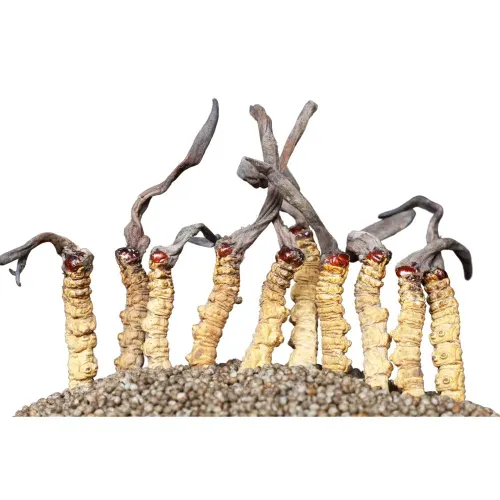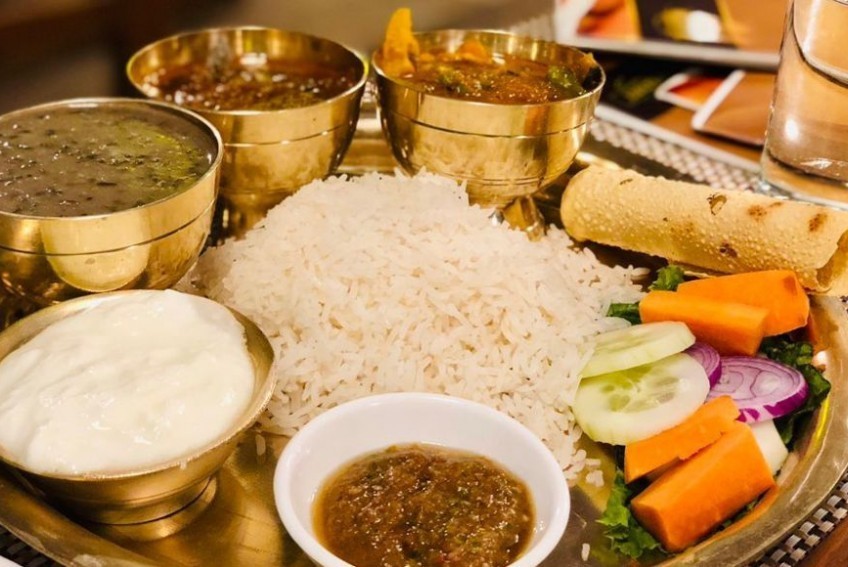Share this Article

Nepal, a land blessed with diverse landscapes, is not only famous for its towering mountains and rich cultural heritage but also for its vibrant and varied cuisine. Nestled in the heart of the Himalayas, the country boasts an impressive range of fruits and vegetables that have been cultivated for centuries, often found only in the remote regions of this mountain kingdom. These ancient and rare produce items are a testament to the unique flavors of Nepal, offering an intriguing glimpse into the agricultural practices that have endured for generations. This article explores some of the rare fruits and vegetables native to the Himalayas that continue to shape Nepalese cuisine.
1. Himalayan Tartary Buckwheat (Fagopyrum tataricum)
While buckwheat is commonly known in many parts of the world, the Himalayan Tartary buckwheat is a distinct variety grown in the high-altitude regions of Nepal. Unlike the more widely consumed buckwheat, this variety is known for its darker hue and earthy, slightly bitter flavor. It is often used in the preparation of traditional dishes such as fapar ko roti (buckwheat flatbread) and kodo ko bhat (buckwheat porridge), which are staples in the diets of mountain communities. This ancient grain is also packed with antioxidants and nutrients, making it a valuable part of the region's food security.
2. Ghodtul (Himalayan Blackberries)
The Ghodtul, or Himalayan blackberry, is a wild fruit that thrives in the rugged terrain of Nepal's foothills. Unlike its cultivated counterpart, the Himalayan blackberry grows in the wild, in clusters of small, dark purple berries. These berries are harvested during the late summer and early autumn and are traditionally used to make jams, juices, and pickles. With its sweet yet tart taste, the Ghodtul is not only enjoyed as a food item but also used in various traditional remedies for ailments such as sore throats and digestive problems. The berry’s deep color and rich antioxidants contribute to its medicinal and culinary value.
3. Yarsagumba (Cordyceps Sinensis)
Perhaps the most famous of Nepal’s rare and ancient edible products, Yarsagumba (cordyceps), is a parasitic fungus that grows on the larvae of insects in the high-altitude meadows of the Himalayas. It has been used in traditional Nepali medicine for centuries, with claims of boosting energy, improving libido, and enhancing longevity. Its rarity and high price make it a highly sought-after delicacy and medicinal herb. Although technically not a fruit or vegetable, Yarsagumba plays a crucial role in Nepalese cuisine and medicine, particularly in Tibetan and Sherpa communities, where it is considered a "superfood."
4. Sea Buckthorn (Hippophae rhamnoides)
Another rare fruit found in the higher altitudes of Nepal is the sea buckthorn, known locally as Chharma or Chure. This small, orange fruit grows on thorny shrubs that thrive in the subalpine and alpine zones. The fruit is incredibly sour but packed with vitamins, antioxidants, and essential fatty acids, making it a prized item in the Himalayas. The pulp of the sea buckthorn is used in juices, jams, and herbal tonics, prized for its immune-boosting properties. In Nepalese villages, it is traditionally consumed in the form of a fermented drink, which is believed to have medicinal qualities, especially in treating colds and respiratory issues.
5. Lapsi (Choerospondias axillaris)
Lapsi, or Himalayan Tamarind, is another unique fruit native to Nepal. It grows on the Choerospondias axillaris tree, found in the subtropical and temperate forests of the region. The fruit itself is a small, oval-shaped drupe with a tangy, sour taste. Traditionally, Lapsi is used to make a tangy paste known as Lapsi achar, which is commonly paired with rice and other meals in rural Nepal. This fruit also holds an important place in the region's folk medicine, where it is used to treat digestive issues, coughs, and fevers. Lapsi is also found in sweets, jams, and juices, adding a tangy and unique flavor to the local cuisine.
6. Simal (Red Silk Cotton Tree Fruits)
The Bombax ceiba or red silk cotton tree, known as Simal in Nepali, produces a distinctive fruit that grows in the warmer regions of the Himalayas. The fruit itself contains cotton-like fibers that float in the air, often carried by the wind, making them a symbol of spring in Nepal. The seeds inside the fruit are used in various traditional dishes, often roasted or boiled. The pulp of the Simal fruit is also used to make a refreshing drink, and the seeds are believed to have medicinal properties, used in the treatment of skin diseases and other ailments.
7. Fiddlehead Ferns (Paku)
Fiddlehead ferns, known locally as Paku, are a traditional vegetable found in the wilds of Nepal. These young, coiled fronds of ferns are harvested in the early spring when they are tender and before they unfurl into full-grown ferns. In Nepalese cuisine, they are typically stir-fried or used in soups, often accompanied by spices, garlic, and chili. Rich in vitamins A and C, iron, and fiber, Paku is considered a nutritious food source. It is also believed to have several health benefits, including improving digestion and reducing inflammation.
8. Chheura (Himalayan Potato)
Chheura, or Himalayan potatoes, are small, starchy tubers found in the remote regions of Nepal, particularly in the higher-altitude areas of the far western hills. This potato variety is known for its unique flavor, which is more robust than the common varieties found at lower altitudes. These tubers are often dried and preserved for the winter months, where they are added to soups and stews or fried with spices to enhance flavor. Chheura is an essential part of the diet for many rural households, providing the necessary carbohydrates for survival during harsh mountain winters.
9. Dalle Khursani (Nepali Chilli)
The Dalle Khursani is a rare and fiery chili pepper native to the high-altitude regions of Nepal. These small, round chilies pack an intense heat and are known for their ability to add a distinct flavor to any dish. Used in a variety of Nepalese dishes, from curries to pickles, Dalle Khursani is often preserved as achar or ground into spice powders. It holds great cultural significance in Nepalese cuisine, often used in festivals and rituals for its supposed ability to ward off evil spirits. Its spiciness is balanced by the unique smoky flavor it imparts to foods.
10. Pahenlo Kachila (Nepali Wild Ginger)
Pahenlo Kachila, or wild ginger, is another rare spice native to Nepal. Grown in the highlands, this ginger variety has a unique aroma and pungency that is different from the more commonly used ginger varieties in the lowlands. It is often used in Nepalese cooking to season stews, meat dishes, and curries, as well as in herbal teas. Known for its medicinal properties, wild ginger is also used in traditional medicine to treat digestive issues and improve circulation.
Conclusion
Nepal's ancient fruits and vegetables are not only a testament to the country's agricultural ingenuity but also play a significant role in the preservation of cultural identity. These rare and unique foods have withstood the test of time, and their continued use in contemporary cuisine is a symbol of Nepal’s deep connection to its history and environment. From medicinal herbs to vibrant, wild fruits, these ancient flavors offer a taste of the Himalayas that is as rich and diverse as the culture and people who have nurtured them for generations.
Categories:
Food & Drink
Tags:
WildHerbsNepal
,
RareHimalayanPlants
,
WildFlavorsNepal
,
ForgottenFlavors







